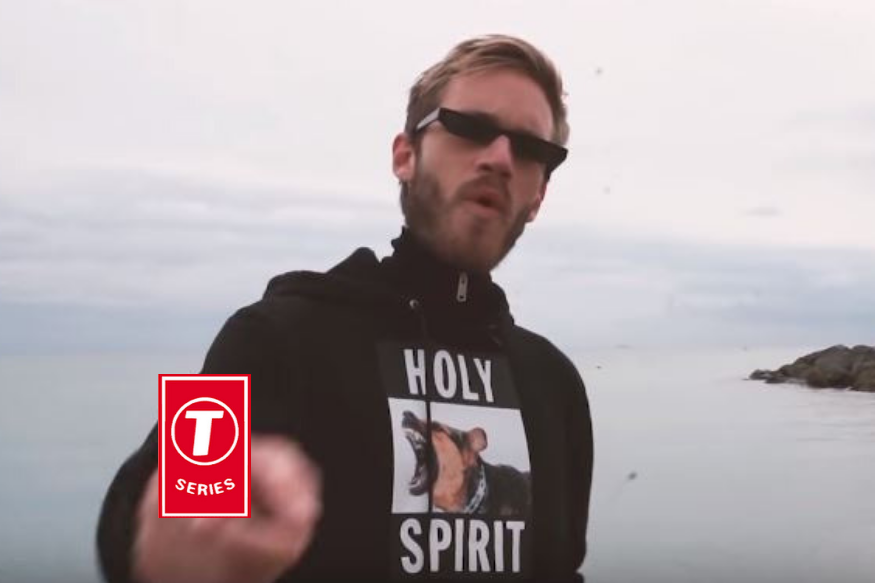T-Series’ bid for YouTube’s top spot shines a light on the site’s current, less creator-centric focus
I see YouTubers as celebrities, but when I envision a “YouTuber” in my head, I don’t picture someone who is living a garish lifestyle. I picture people who manage to become household names despite having humble beginnings and still living relatively normal lives.
The guys from Smosh were just teenagers with camcorders and boxes over their heads creating sketch comedy in their backyards. Egoraptor and Eddsworld made full-length, genuinely funny animated videos, and they did so from their bedrooms. Fred was some kid that discovered how to use pitch-shift and somehow turned that into three made-for-TV movies and an appearance on iCarly.
One sentiment I heard echoed around a lot back then was that YouTube was a place for people to go when they aren’t good enough for Hollywood. While I feel like that’s a pretty negative way to put it, there is something to this perspective: YouTube was a renegade entertainment service, one where the two class clowns from your high school could be everyone’s class clown.
In recent years, however, it appears as though YouTube has been trying to break away from this identity, instead looking to be the home of “real” celebrities. Just take a look at the annual YouTube Rewinds from 2016 and 2018, which heavily featured Dwayne “The Rock” Johnson and Will Smith respectively.
There’s nothing wrong with Johnson or Smith, but do they really represent YouTube? Are Jimmy Fallon, Jimmy Kimmel, Seth Meyers, or John Oliver really YouTubers? If not, how come I currently see their videos higher on YouTube’s “Trending” tab than Jake Paul, one of the names that many associate the most with modern-day YouTube?
With services like YouTube TV and YouTube Premium being pushed all over the app, it’s clear that the site is trying to be more like Netflix and Hulu than like Dailymotion or Vimeo, other video-hosting platforms that YouTube already dominates in their field.
Should YouTube be admonished for trying to evolve? Of course not, the site would get stale without change; but the issue I am seeing is that they are forgetting their roots and trying to be just like the entertainment avenues that are already starting to overpopulate the market.
The biggest indication of this focus-shift in my eyes has been the rise of T-Series in 2018. T-Series is India’s largest record label and movie studio, and around September of last year, analysts realized that their YouTube channel had suddenly shot to second place in terms of subscriber-count and was set to overtake the number-one channel on Oct. 21, 2018.
With YouTube’s focus on celebrities, it wouldn’t have been too far-fetched to believe that the channel with the most subscribers on YouTube was a music video channel – for example, Justin Bieber currently holds the number-four spot. However, what turned this neat little achievement for T-Series into a site-wide civil war was the fact that the current king of YouTube is a regular 29-year-old dude with two editors and a bit of charisma: PewDiePie.
Felix “PewDiePie” Kjellberg is a Swedish YouTuber who got his start in 2010 as a Let’s Player, someone who uploads videos of himself playing video games. Like YouTube itself, Kjellberg has evolved with the times, as while gaming content was huge when he arrived on the scene, he has mostly moved onto vlogging as his channel became more known for commentary about YouTube itself than commentary about video games.
PewDiePie has had the most subscribers of any channel on the platform since 2013, passing YouTube’s own channel in December of that year. When PewDiePie became the first channel to ever pass 50 million subscribers in August 2016, YouTube celebrated the occasion by sending him a ruby play button with his logo imprinted on it. For years, Kjellberg has been the undisputed king of YouTube, so when news broke out that he might lose his top spot, social media freaked out.
Instead of being a race between two YouTube channels, T-Series’ bid for PewDiePie’s top spot on YouTube has become a clash of ideologies. It’s great that the big dog in the yard is a Swedish kid basically working alone, but maybe YouTube is right to leave him behind. It honestly might be safer to have a professional studio representing YouTube as a whole than Kjellberg.
Coming back to YouTube’s Rewind videos, PewDiePie has been conspicuous in his absence from the 2017 and 2018 editions. However, this is less indicative of YouTube’s change in focus as much as it an example of why PewDiePie is a poor representative of the site: he is quite prone to controversy.
In early 2017, Kjellberg became the subject of a lot of criticism for posting a video online where he jokingly made anti-Semitic remarks. From his reaction to the joke going down, it was clear that even he was aware that he had gone too far, but he still uploaded the video regardless. Washington Post was the most notable publication to denounce Kjellberg’s behavior, and YouTube didn’t manage to escape the public outcry unscathed either.
In September of that year, Kjellberg faced another controversy as he frustratedly shouted the N-word at another player while streaming gameplay. Soon after this, #PewDiePieIsOverParty began trending on Twitter, and this event left such a bad taste in viewers’ mouths that I still see it brought up in debates online. It was a bad look on PewDiePie as a channel and YouTube as a platform, so no one was really surprised when Kjellberg was left out of the 2017 YouTube Rewind three months later.
The problem wasn’t leaving PewDiePie out, however, but rather who was replacing him. Why was the third person shown in YouTube Rewind 2017 Stephen Colbert? Why was the very first person in the 2018 video Will Smith? To be fair to YouTube, PewDiePie was present in the 2016 video and that one opened with The Rock in a fanny pack, so it’s possible for them to have the best of both worlds, but that doesn’t seem to be the focus anymore.
Despite the lack of acknowledgment from YouTube, PewDiePie’s fanbase has still been as vocal as ever. Though T-Series was set to surpass Kjellberg’s channel on Oct. 24, it still hasn’t happened three months later. As of Jan. 9, 2019, PewDiePie has around 80,311,000 subscribers while T-Series has around 79,649,000. It appears that the “Bro Army’s” cries of “Subscribe To PewDiePie” across social media have been working, though there’s no telling when their energy will run out.
According to the website Social Blade, PewDiePie is gaining an average of 144,656 subscribers per day while T-Series is averaging 157,656, so even though PewDiePie is still in the lead, it’s only a matter of time before the power of India’s population gives T-Series the upper hand.
That’s one of the more interesting parts of this whole ordeal: T-Series isn’t really a bad guy here. India as a whole is simply getting more access to the Internet, and people are subscribing to T-Series because it’s basically their Disney in terms of cultural relevance. While PewDiePie is writing diss tracks about them, their channel is just posting regular old music videos and movie trailers.
The world’s not going to explode if PewDiePie is toppled tomorrow. Some people have already started to point out the fact that regardless of whether or not he’s above T-Series, he’s still going to be the most-subscribed-to individual on YouTube, but isn’t the accomplishment diminished a bit when you have to add qualifiers like that?
I’m not going to tell you to subscribe to PewDiePie – his content is certainly not my cup of tea, and he’s controversial for a reason – but I also don’t like where YouTube is headed, and right now, the thing keeping us from fully entering this new era is T-Series securing that top spot. I’m not sure I’m ready to wake up and see that PewDiePie is not the face of YouTube anymore.







